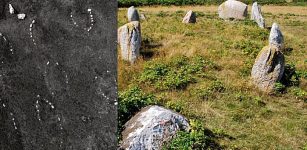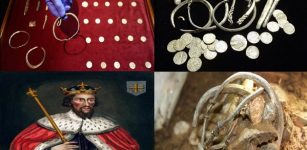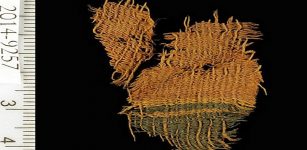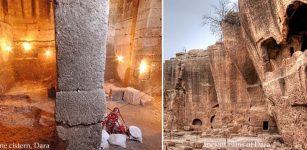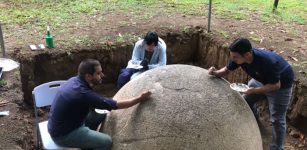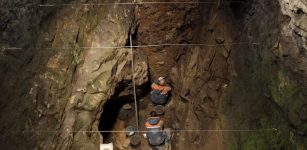Controversial Ancient Underwater Ruins Of Zakynthos Were Built By Microbes – Scientists Say
MessageToEagle.com – Outside the coast of Zakynthos there is an ancient long-lost Greek underwater city. The ancient underwater ruins of Zakynthos have been a controversial topic for many years.
Some researchers were convinced this ancient underwater city was man-made, while others suggested this was a rare natural geological phenomenon that took place at least 5,000 years ago.

In late May, 2013 Greek archaeologists thought the rocky formation they discovered at the bottom of the Alykanas gulf in Zakynthos were ruins of an ancient city. Zakynthos has been known since prehistoric times.
Homer refers to the island as Yllessa (wooded) and tells that its first settler was Zakynthos, the son of Dardanos, king of Phrygia.
Zakynthos lies in a tectonically complex and active area. There have been several destructive earthquakes in this region in the past. It seemed therefore logical to assume these findings were the remains of an ancient settlement swallowed by the ocean’s tide.
Now, a group of scientists from the University of East Anglia and the University of Athens suggest the ancient underwater ruins of Zakynthos were actually built by microbes about 5 million years ago.
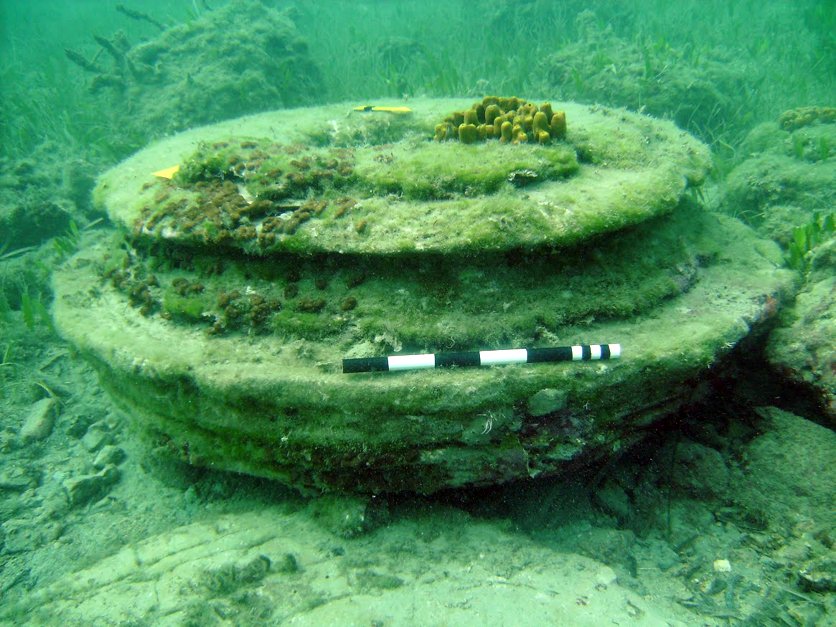
“The site was discovered by snorkellers and first thought to be an ancient city port, lost to the sea. There were what superficially looked like circular column bases, and paved floors. But mysteriously no other signs of life – such as pottery.
The disk and doughnut morphology, which looked a bit like circular column bases, is typical of mineralization at hydrocarbon seeps – seen both in modern seafloor and palaeo settings,” Professor Julian Andrews said.
Researchers analyzed the mineral content and texture of the formations in extreme detail, using X-ray, microscopy and stable isotope techniques. “We investigated the site, which is between two and five meters under water, and found that it is actually a natural geologically occurring phenomenon,” Andrews said.
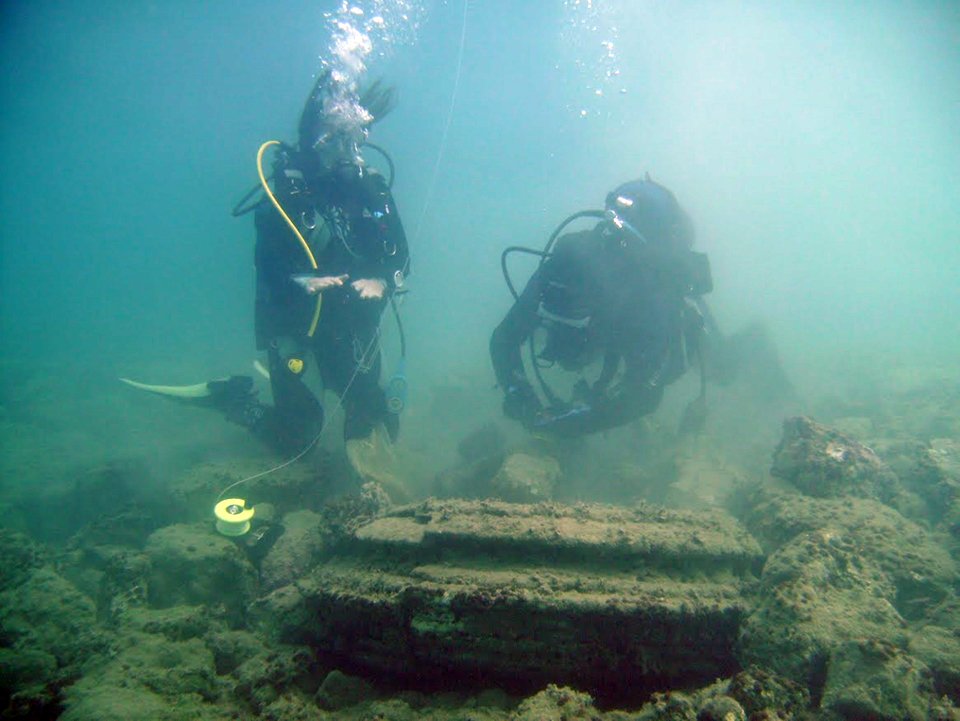
“We found that the linear distribution of these doughnut shaped concretions is likely the result of a sub-surface fault which has not fully ruptured the surface of the sea bed. The fault allowed gases, particularly methane, to escape from depth.”
According to Professor Andrews, microbes in the sediment used carbon in the methane as fuel. This then led to chemical changes that caused a natural cement to form. “In this case the cement was an unusual mineral called dolomite which rarely forms in seawater, but can be quite common in microbe-rich sediments. These concretions were then exhumed by erosion to be exposed on the seabed today.
See also:
Zakynthos Underwater Ruins Remain A Mystery – Nothing Similar Has Ever Been Discovered Elsewhere
7 Enigmatic Ancient Underwater Ruins – Our Oceans Are Full Of Secrets
12 Most Amazing Underwater Discoveries – Our Oceans Are Full Of Secrets!
“This kind of phenomenon is quite rare in shallow waters. Most similar discoveries tend to be many hundreds and often thousands of meters deep underwater. These features are proof of natural methane seeping out of rock from hydrocarbon reservoirs.”
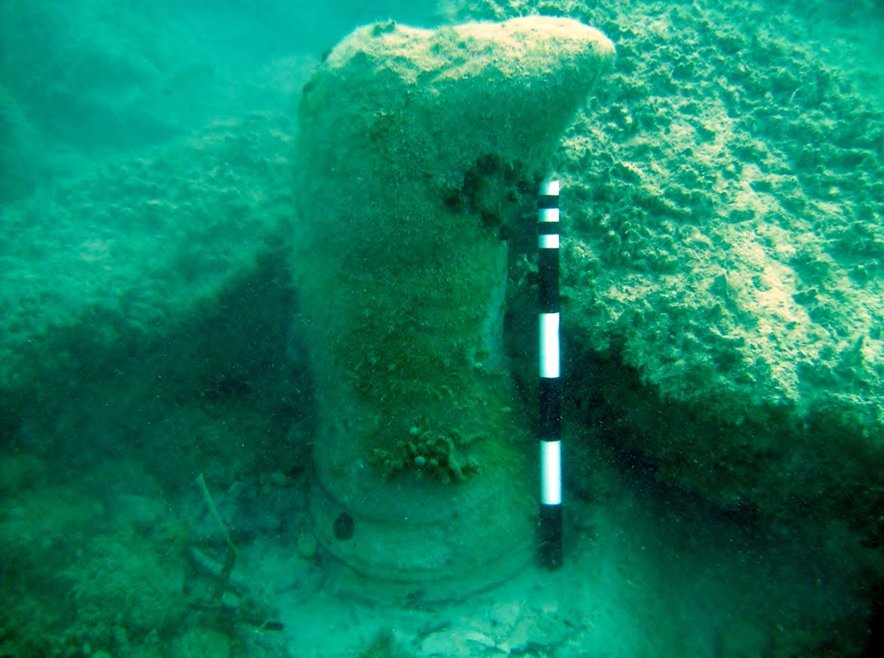
The study of the formations, published in Marine and Petroleum Geology, concludes: “Exhumed sediment-hosted concretions exposed in shallow marine settings can be readily confused with archaeological artifacts in countries like Greece which are rich in submerged antiquities, but the extent of which are still poorly known.
“We summarize our findings with the maxim ‘all that glistens is not gold’ or in this case ‘columns and pavements in the sea, not always antiquities will be’.”
Has the long-standing mystery of the controversial ancient underwater ruins of Zakyntos finally been solved?
MessageToEagle.com


